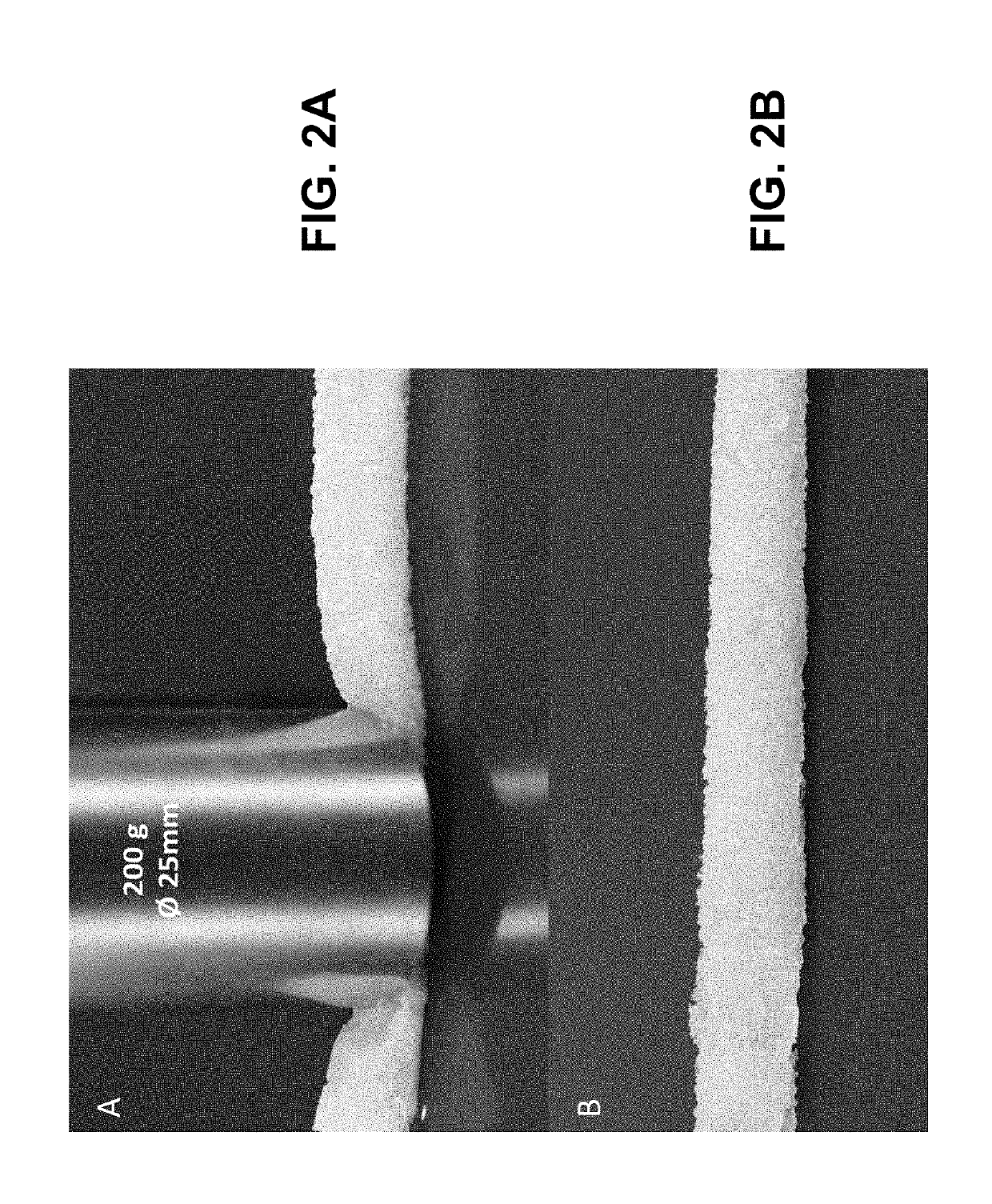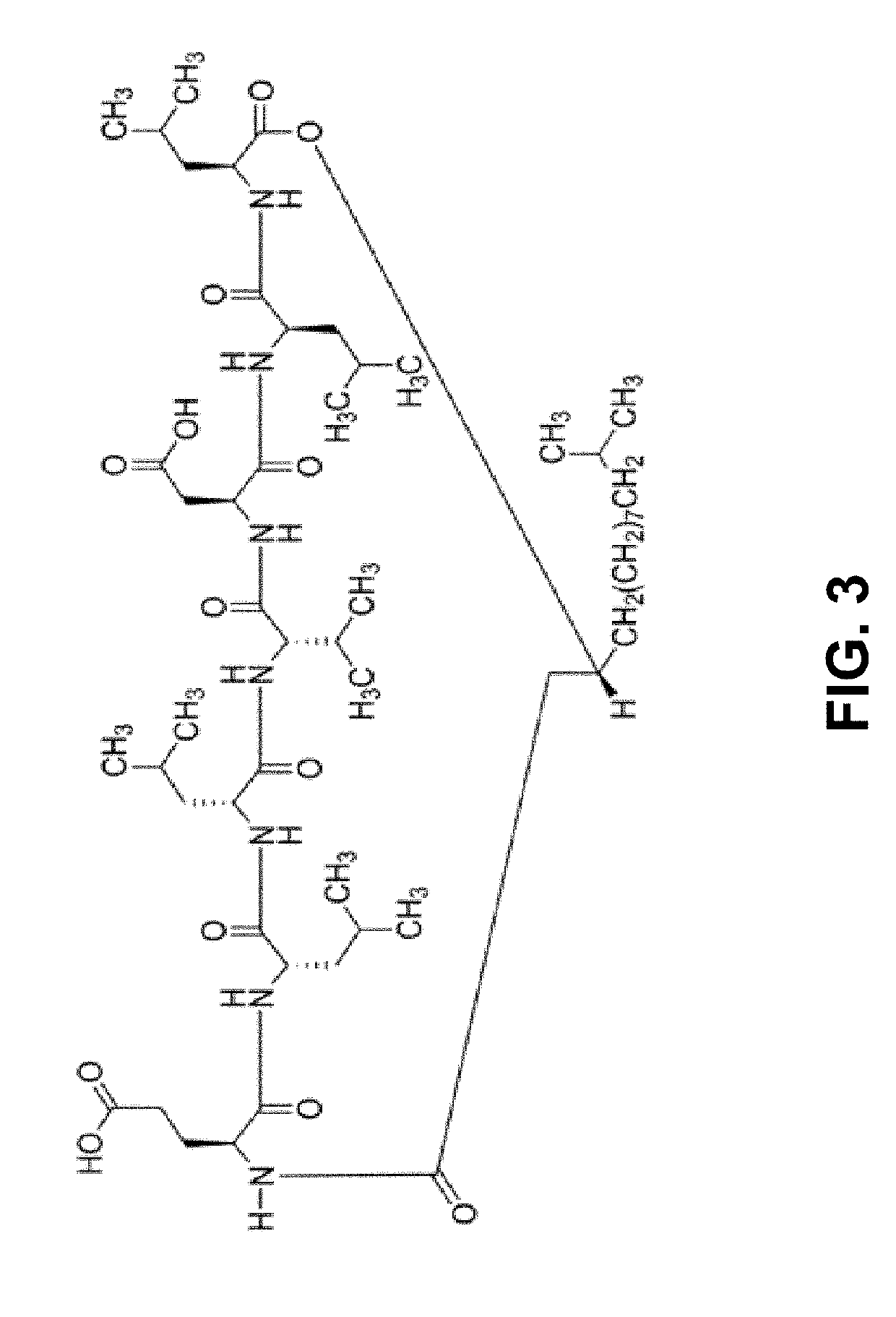Medical material and method for preparing from biological tissue
- Summary
- Abstract
- Description
- Claims
- Application Information
AI Technical Summary
Benefits of technology
Problems solved by technology
Method used
Image
Examples
example 1
[0114]In the following an exemplary process for manufacturing an extract from decellularized biological tissue (e.g. based on porcine pericardium) and its application to a TAVI heart valve prosthesis is described, in which the resulting material undergoes a significant increase in thickness upon rehydration (at the implantation site).
[0115]The individual succeeding steps of this example of the method according to the invention are depicted in FIG. 1
[0116]In step 1, porcine pericardium is harvested from a pig at a slaughterhouse and is stored in isotonic saline solution (0.9% w / v; Fresenius-Kabi) at a temperature of 4° C. for 2-6 hours.
[0117]The solution contains sodium chloride as well as penicillin and / or streptomycin to prevent bacterial growth.
[0118]In step 2, the tissue is prepared, moist, in isotonic saline solution (0.9% w / v; Fresenius-s Kabi). That is, the layers of the pericardium are separated from one another, adhering fatty and connective tissue is carefully removed, and ...
example 2
[0134]For example 2 steps 1 to 6 are conducted as described in example 1. Subsequent steps are conducted in a different way in order to obtain a solid three-dimensional object composed entirely of the sponge-like swellable material as described herein.
[0135]The solubilized extracellular matrix obtained in step 6 is at first centrifuged (3.000 g for 10 minutes) and the supernatant is discarded. The tissue fibers are then immersed in DPBS without Ca and Mg (Lonza, Catalog# 17-512Q) and are formed into a homogeneous and viscous suspension of defined concentration by vortexing and mixing. Thereafter, the resulting suspension is mixed with glutaraldehyde (Sigma-Aldrich, glutaraldehyde solution, Catalog# G7651) such that glutaraldehyde will have a concentration of 0.08-1% w / v. The resulting moldable suspension is then filled into a mold that is covered in order to prevent evaporation. The crosslinking is done without further movement at e.g. 60° C. for three days.
[0136]The resulting mold ...
example 3
[0139]For example 3 steps 1 to 7 are conducted as described above. Subsequent steps are conducted in a different way in order to obtain a sponge-like swellable material as described herein.
[0140]The moldable tissue suspension obtained in step 7 is at first centrifuged (3.000 g for 10 minutes) and the supernatant is discarded. The obtained tissue fibers are mechanically mixed to get a rigid plasticized material. This highly viscous material can be arranged in a mold and can thus be structured three-dimensionally. An additional pressing step is optional. The obtained structures are dimensionally stable and are permanently stabilized using crosslinking with 0.08-1% w / v glutaraldehyde (Sigma-Aldrich, glutaraldehyde solution, Catalog# G7651) in DPBS without Ca and Mg (Lonza, Catalog# 17-512Q) at e.g. 60° C. for three days.
[0141]The resulting mold can then be dried after stabilization and optionally hot-pressed as in step 10 of example 1 to obtain a sponge-like swellable material as sugge...
PUM
| Property | Measurement | Unit |
|---|---|---|
| Structure | aaaaa | aaaaa |
| Moldable | aaaaa | aaaaa |
| Biological properties | aaaaa | aaaaa |
Abstract
Description
Claims
Application Information
 Login to View More
Login to View More - R&D
- Intellectual Property
- Life Sciences
- Materials
- Tech Scout
- Unparalleled Data Quality
- Higher Quality Content
- 60% Fewer Hallucinations
Browse by: Latest US Patents, China's latest patents, Technical Efficacy Thesaurus, Application Domain, Technology Topic, Popular Technical Reports.
© 2025 PatSnap. All rights reserved.Legal|Privacy policy|Modern Slavery Act Transparency Statement|Sitemap|About US| Contact US: help@patsnap.com



